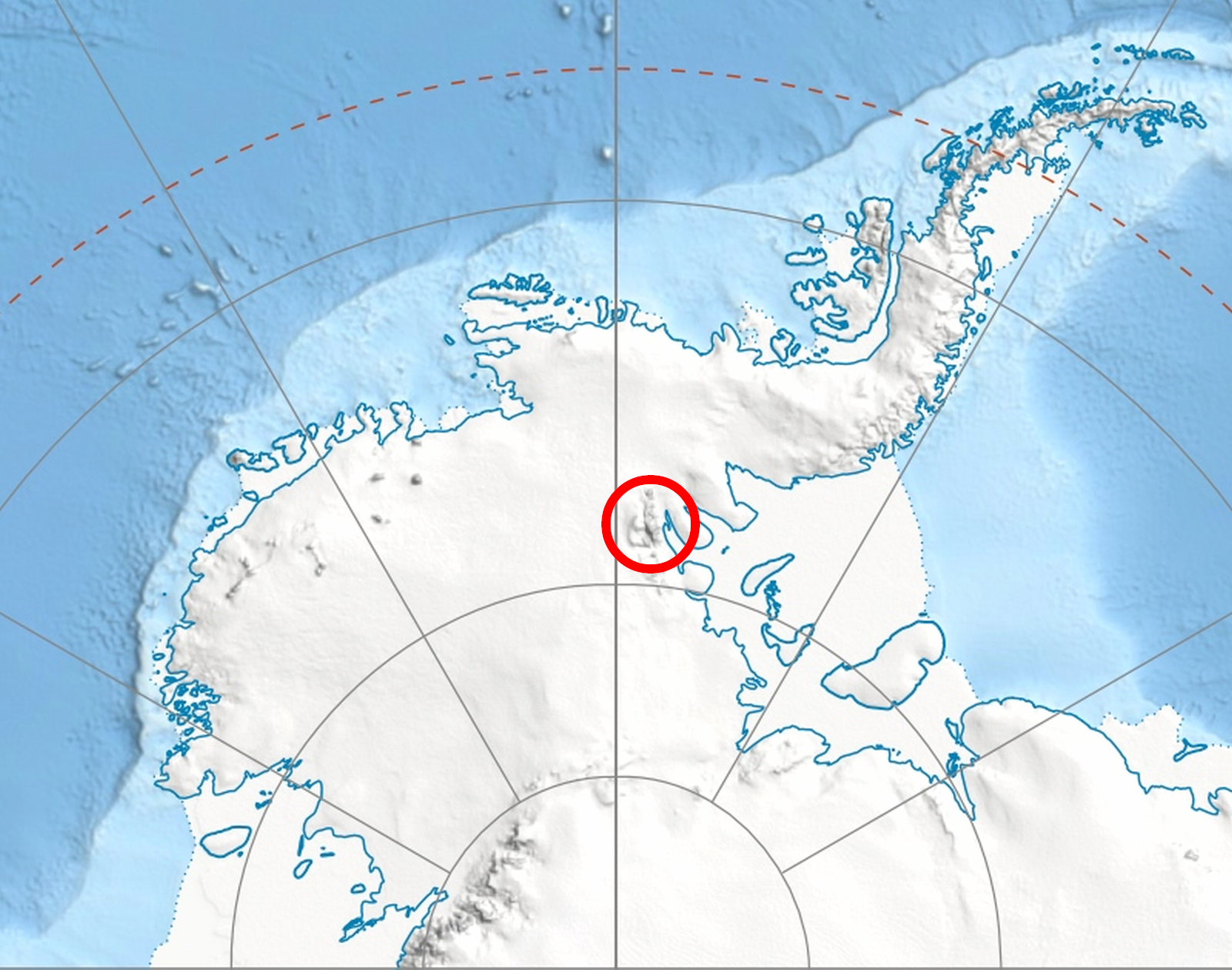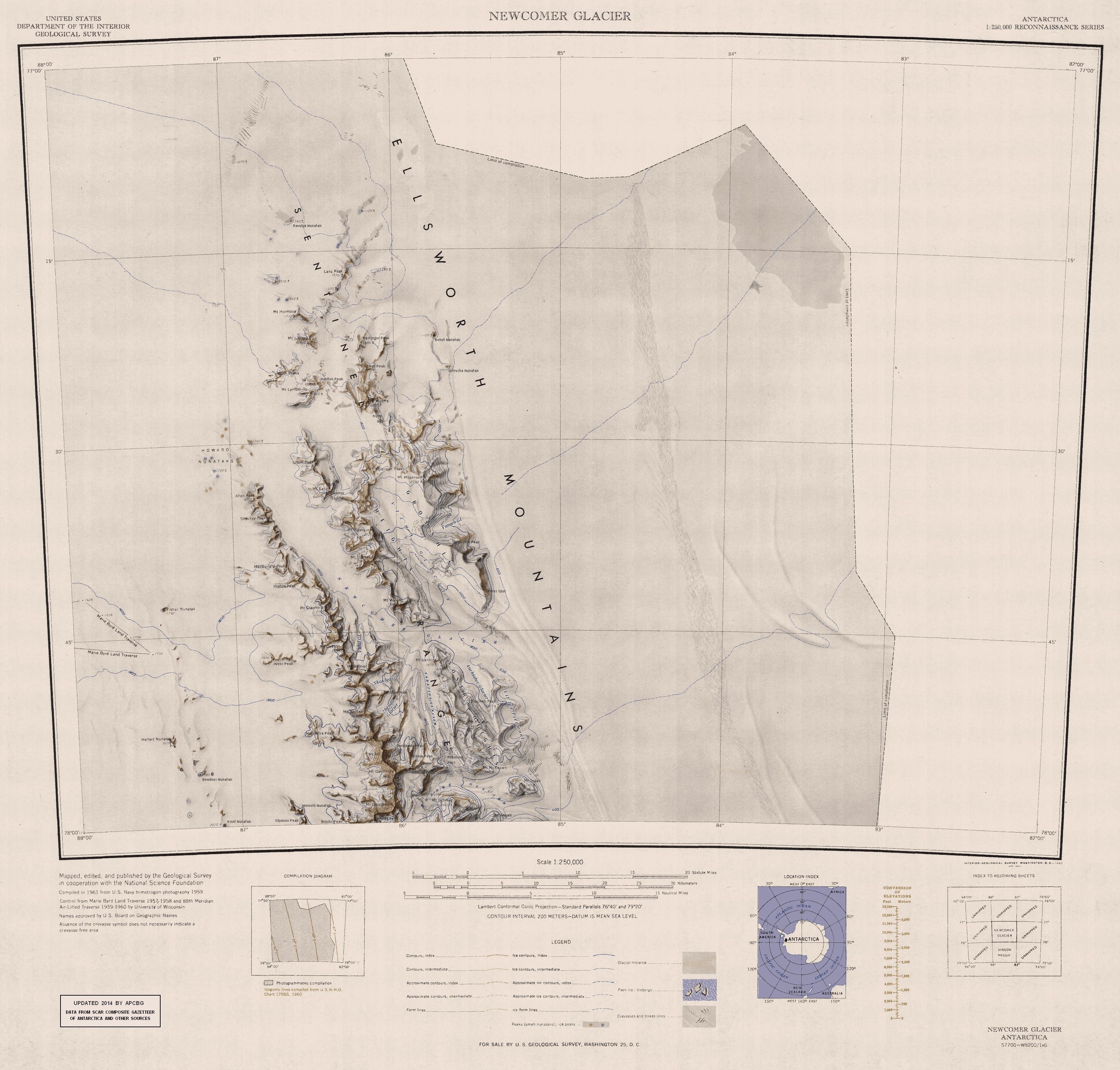|
Ostrusha Nunatak
Ostrusha Nunatak (, ‘Nunatak Ostrusha’ \'nu-na-tak o-'stru-sha\) is the rocky hill of elevation 841 mReference Elevation Model of Antarctica. Polar Geospatial Center. University of Minnesota, 2019 projecting from the ice cap in the northeastern periphery of Sentinel Range in Ellsworth Mountains, Antarctica. It is named after the Thracian mound of [...More Info...] [...Related Items...] OR: [Wikipedia] [Google] [Baidu] |
Sentinel Range
The Sentinel Range is a major mountain range situated northward of Minnesota Glacier and forming the northern half of the Ellsworth Mountains in Antarctica. The range trends NNW-SSE for about and is 24 to 48 km (15 to 30 mi) wide. Many peaks rise over and Vinson Massif (4892 m) in the southern part of the range is the highest elevation on the continent.Sentinel Range. SCAR Composite Antarctic Gazetteer. Sentinel Range comprises a main ridge (featuring Vinson Massif in its southern portion) and a number of distinct heights, ridges and mountains on its east side, including (south to north) , [...More Info...] [...Related Items...] OR: [Wikipedia] [Google] [Baidu] |
Ellsworth Mountains
The Ellsworth Mountains are the highest mountain ranges in Antarctica, forming a long and wide chain of mountains in a north to south configuration on the western margin of the Ronne Ice Shelf in Marie Byrd Land. They are bisected by Minnesota Glacier to form the Sentinel Range to the north and the Heritage Range to the south. The former is by far the higher and more spectacular with Mount Vinson () constituting the highest point on the continent.Bockheim, J.G., Schaefer, C.E., 2015. ''Soils of Ellsworth Land, the Ellsworth Mountains''. In: Bockheim, J.G. (Ed.), ''The Soils of Antarctica. World Soils Book Series'', Springer, Switzerland, pp. 169–181. The mountains are located within the Chilean Antarctic territorial claim but outside of the Argentinian and British ones. Discovery The mountains were discovered on November 23, 1935, by Lincoln Ellsworth in the course of a trans-Antarctic flight from Dundee Island to the Ross Ice Shelf. He gave them the descriptive name Sentinel ... [...More Info...] [...Related Items...] OR: [Wikipedia] [Google] [Baidu] |
Antarctica
Antarctica () is Earth's southernmost and least-populated continent. Situated almost entirely south of the Antarctic Circle and surrounded by the Southern Ocean, it contains the geographic South Pole. Antarctica is the fifth-largest continent, being about 40% larger than Europe, and has an area of . Most of Antarctica is covered by the Antarctic ice sheet, with an average thickness of . Antarctica is, on average, the coldest, driest, and windiest of the continents, and it has the highest average elevation. It is mainly a polar desert, with annual precipitation of over along the coast and far less inland. About 70% of the world's freshwater reserves are frozen in Antarctica, which, if melted, would raise global sea levels by almost . Antarctica holds the record for the lowest measured temperature on Earth, . The coastal regions can reach temperatures over in summer. Native species of animals include mites, nematodes, penguins, seals and tardigrades. Where vegetation o ... [...More Info...] [...Related Items...] OR: [Wikipedia] [Google] [Baidu] |
Thracians
The Thracians (; grc, Θρᾷκες ''Thrāikes''; la, Thraci) were an Indo-European languages, Indo-European speaking people who inhabited large parts of Eastern Europe, Eastern and Southeast Europe, Southeastern Europe in ancient history.. "The Thracians were an Indo-European people who occupied the area between northern Greece, southern Russia, and north-western Turkey. They shared the same language and culture... There may have been as many as a million Thracians, diveded among up to 40 tribes." Thracians resided mainly in the Balkans (mostly Present (time), modern day Bulgaria, Turkey and Greece) but were also located in Anatolia, Anatolia (Asia Minor) and other locations in Eastern Europe. The exact origin of Thracians is unknown, but it is believed that proto-Thracians descended from a purported mixture of Proto-Indo-Europeans and Early European Farmers, arriving from the rest of Asia and Africa through the Asia Minor (Anatolia). The proto-Thracian culture developed int ... [...More Info...] [...Related Items...] OR: [Wikipedia] [Google] [Baidu] |
Thracian Tomb Ostrusha
The Ostrusha mound is a Thracian burial tumulus near the Bulgarian town of Shipka. It was constructed in the middle of the 4th century BCE. The stone structures under the more than 18 meters high mound form one of the biggest representative tomb-cult complexes with 6 rooms on an area of 100 square meters. It was professionally excavated in 1993. One of the chambers is fully maintained. It is made of two carved-out solid granite blocks, weighing a total of more than 60 tons. The roof block is divided into dozens of square and circle shaped niches filled with masterfully painted portraits, scenes with people, fighting between animals, plants and geometric decorations. Most of the frescoes are severely damaged apart from a portrait of a young noble woman. A horse with full set of silver appliques as well as a gilded armor collar and two silver vessels were found in one of the other rooms that was not robbed in antiquity. See also *Thracian tomb of Aleksandrovo * Thracian tomb o ... [...More Info...] [...Related Items...] OR: [Wikipedia] [Google] [Baidu] |
Mount Mogensen
Mount Mogensen () is a snow-covered mountain, high, standing northeast of Mount Ulmer in Gromshin Heights on the east side of northern Sentinel Range in Ellsworth Mountains, Antarctica. It surmounts Rutford Ice Stream to the east and the head of Vicha Glacier to the southwest. The mountain was discovered by Lincoln Ellsworth on his trans-Antarctic flight of November 23, 1935, and was named by the Advisory Committee on Antarctic Names for Palle Mogensen, a scientific leader at South Pole Station in 1957–58. See also * Mountains in Antarctica This is a list of all the Ultra prominent peaks (with topographic prominence greater than 1,500 metres) in Antarctica. Some islands in the South Atlantic have also been included and can be found at the end of the list. Antarctica South Atl ... References Mountains of Ellsworth Land {{EllsworthLand-geo-stub ... [...More Info...] [...Related Items...] OR: [Wikipedia] [Google] [Baidu] |
Gromshin Heights
Gromshin Heights ( bg, Громшински възвишения, ‘Gromshinski Vazvisheniya’ \'grom-shin-ski v&-zvi-'she-ni-ya\) are the heights rising to 2731 mReference Elevation Model of Antarctica. Polar Geospatial Center. University of Minnesota, 2019 at on the east side of northern in , |
Mount Weems
Mount Weems () is a prominent mountain, 2,210 m, located 8 nautical miles (15 km) north of Mount Ulmer near the north end of the Sentinel Range in the Ellsworth Mountains. It is connected to Gromshin Heights to the south by Kipra Gap. The mountain was discovered by Lincoln Ellsworth on his trans-Antarctic flight of November 23, 1935. It was named by the Advisory Committee on Antarctic Names The Advisory Committee on Antarctic Names (ACAN or US-ACAN) is an advisory committee of the United States Board on Geographic Names responsible for recommending commemorative names for features in Antarctica. History The committee was established ... (US-ACAN) for Captain P. V. H. Weems, a retired inventor from the U.S. Navy and a developer of air navigation instrumentation and techniques and consultant to Ellsworth on air navigation problems of this flight. Ellsworth Mountains Mountains of Ellsworth Land {{EllsworthLand-geo-stub ... [...More Info...] [...Related Items...] OR: [Wikipedia] [Google] [Baidu] |
Bohot Nunatak
Bohot Nunatak (, ‘Bohotski Nunatak’ \'bo-hot-ski 'nu-na-tak\) is a rocky hill at an elevation of 885 mReference Elevation Model of Antarctica. Polar Geospatial Center. University of Minnesota, 2019 projecting from the ice cap in the northeastern periphery of Sentinel Range in the Ellsworth Mountains, Antarctica. It is named after the settlement of Bohot in Northern Bulgaria. Location Bohot Nunatak is located at , which is 13.7& ...[...More Info...] [...Related Items...] OR: [Wikipedia] [Google] [Baidu] |
Scientific Committee On Antarctic Research
The Scientific Committee on Antarctic Research (SCAR) is an interdisciplinary body of the International Science Council (ISC). SCAR coordinates international scientific research efforts in Antarctica, including the Southern Ocean. SCAR's scientific work is administered through several discipline-themed ''science groups''. The organisation has observer status at, and provides independent advice to Antarctic Treaty Consultative Meetings, and also provides information to other international bodies such as the Intergovernmental Panel on Climate Change (IPCC) and the United Nations Framework Convention on Climate Change (UNFCCC). History At the International Council of Scientific Unions (ICSU)’s Antarctic meeting held in Stockholm from 9–11 September 1957, it was agreed that a committee should be created to oversee scientific research in Antarctica. At the time there were 12 nations actively conducting Antarctic research and they were each invited to nominate one delegate to ... [...More Info...] [...Related Items...] OR: [Wikipedia] [Google] [Baidu] |




